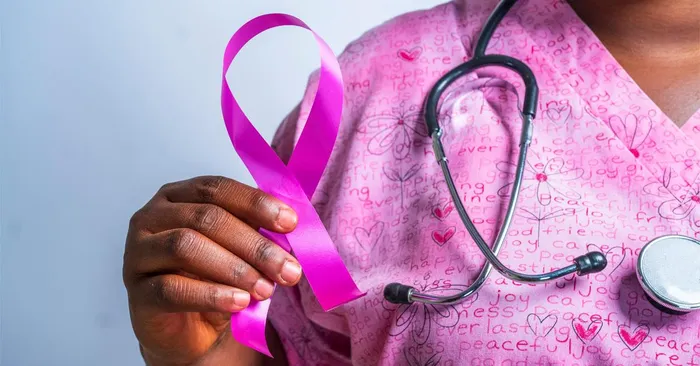Breast cancer awareness: why early detection is crucial for South African women

Breast cancer caught early can be treated.
Image: File
Breast cancer remains the most prevalent cancer among women in South Africa, with alarming statistics revealing that approximately 1 in 27 women will be diagnosed with the disease at some point in their lives. Particularly concerning is the fact that around 20% of breast cancer cases occur in women under 40, a stark contrast to the 5% to 7% seen in high-income countries.
As a result, the Breast Imaging Society of South Africa (BISSA) is calling for heightened awareness among women regarding their personal risk factors and encouraging early risk assessments to catch potential cases before they progress.
“Late diagnosis drastically reduces treatment options and survival rates,” warned Dr Peter Scoub, Chair of BISSA. He highlighted the critical factors contributing to delayed diagnoses, including a lack of awareness about breast cancer symptoms, socioeconomic disparities, and limited access to healthcare facilities.
On average, South African women receive a breast cancer diagnosis at the age of 34, and it is noteworthy that younger women are often diagnosed with more aggressive forms of the disease.
To combat these challenges, the BISSA advocates for women to start performing self-examinations from their twenties, with the goal of initiating annual mammograms from age 40.
Dr Scoub emphasised, “The goal of breast cancer screening is to detect the disease before symptoms emerge. Cancers found through routine screening are often smaller and localised, increasing the chances of successful treatment and survival.”
A breast cancer risk assessment tool can provide insightful information regarding an individual’s likelihood of developing the disease. The tool employs a statistical model based on a woman’s medical history, reproductive history, and family health background, helping to identify those at greater risk.
Who is at risk?
While any woman can potentially develop breast cancer, various factors increase the likelihood:
Age: The risk rises with age, although 1 in 8 invasive breast cancer cases are diagnosed in women under 45.
Family history: A close blood relative with breast cancer raises personal risk.
Personal history: Women with a prior breast cancer diagnosis face a 3 to 4 times increased risk of new cancer in either breast.
Dense breast tissue: Women with this condition, as identified on mammograms, have a heightened risk.
Obesity: Being overweight is linked to an increased risk of developing breast and other cancers.
Lifestyle choices: Factors like excessive alcohol consumption, lack of physical activity, and smoking are significant risk contributors.
Hormonal factors: A delayed first pregnancy or not having a full-term pregnancy can elevate risks, while breastfeeding for over a year can decrease it.
How to self-examine your breasts
Regular self-examination can be a vital first step in identifying potential issues. Experts recommend that women observe their breasts at the same time each month. Here's how to effectively perform a self-examination.
Visual Examination: Stand or sit in front of a mirror without a top, arms by your sides. Look for changes in size, shape, symmetry, and skin texture.
Physical Examination: Lying down, use the pads of your three middle fingers to examine your breasts. Apply varying levels of pressure to detect any abnormalities. Pay attention to unusual signs, including swelling, skin irritation, or any discharge that is not breast milk. If you notice changes, consult your healthcare provider immediately.
Dr Scoub’s message resonates with urgency: “Understanding and monitoring these risk factors, performing routine self-checks and regular screening is the most powerful tool we have to improve survival.” As breast cancer does not discriminate, it is imperative that all women, regardless of age or family history, stay vigilant and proactive about their health.